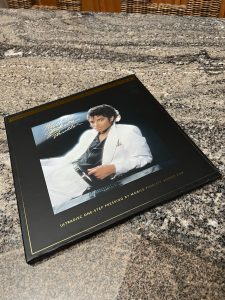Roger Skoff doesn't write about sour grapes
In a previous article, I wrote about how one manufacturer of exceptionally fine High-End audio electronics had had to raise the price of his products in order to be able to sell them.
It was all a vicious cycle that worked like this: In order to get the performance that he and his customers wanted, he had not only to have a brilliant design, but to use the very finest and most expensive materials, components, and technologies in executing it. That made the product (an amplifier, in the case I wrote about) expensive to begin with, but he still could have held its cost down by cutting corners in places (like the sheet metal work, the mounting hardware, the feet, and trim) that would have saved money but not compromised performance. Instead, though he chose to use an ultra-heavy machined aluminum faceplate and gorgeous super-impressive front lifting handles (The rear ones were just ordinary black metal stampings) that obviously increased his cost of production by a significant amount.
When I saw the first pre-production models (I wound-up buying, and still have a pair of them) I asked if he couldn't have lowered the amp's retail price by a lot by just using an ordinary faceplate and cheaper handles – or even leaving the handles off, entirely. His answer was that he could, but that if he did, he might not be able to sell that amplifier at all.
Just the design, the working components, and the amount of skilled labor involved in building it it meant that – even with the cheapest faceplate and trim – the amplifier would still have to be expensive and, unless it looked at least as expensive as it was, nobody would be willing to buy it.
That's been the case with all of High-End audio for the last many years. New High-End products aren't going to be sold by the millions (or even, likely, the thousands), so there's not a large number of sales to spread the R&D, operating, promotional, and facilities costs over, and, for many products, production volume may not even be enough for the manufacturers to realize economies of scale. That means that most High-End stuff, even notwithstanding the premium for its great performance, has to be expensive.
When you add to that the fact that our hobby is not expanding among young people as well as we might like, that most of us are getting along in age and, while possibly a bit more well-heeled, are no longer around to buy our industry's products in great number, you wind-up with another vicious cycle. As time goes by, there are fewer buyers for new and more expensive products, so manufacturers, in order to survive, have to keep on trying to improve their products, which makes them more expensive, which – as per the example earlier given – means that they have to give more and more consideration to appearance to create the value to support the pricing, which increases the cost, and around and around again…. And what that does is to, at least in significant part, change the nature of the High-End market, the products it offers, and the people who buy them. And that has created a new kind of problem.
Let me illustrate what I mean with a little story that happened many years ago, in the 1960s, when I was very young.
Through a string of fortunate events, I managed to acquire a gorgeous, red, viciously fast, Siata Spyder that had been built as a factory team car for the 1953 Targa Florio. I was very pleased with it and very proud to own it. My father, though, who drove a current-year Pontiac Bonneville, thought differently and told me, quite correctly, that his car would do 55 mph, the then-speed limit, at exactly the same speed as mine.
He was right, and that's the problem. The Siata was a race car. Its purpose was to win races, and to do so, it had to have a number of characteristics, none of which applied to my real world and the way I intended to drive it. It had to be blazingly fast. It had to be good handling (able to corner well at high speed). It had to be able to brake well and consistently from high speed. It had to be well enough built to survive an entire race without breaking. It had to do and be all sorts of things, all directly related to its purpose of winning races. The fact that it was red and gorgeous were simply because it was Italian, and although the car had been expensive both for the factory to build, and even for me to buy second-hand, years later, they had nothing at all to do with its performance of its intended purpose.
And I was never going to use it for its intended purpose.
With HiFi gear, we're only going to use it for its intended purpose, and yet it's come around to where, except for some new modestly priced high value brands, we're being forced to pay for perhaps appreciated, but not functionally required—beauty, most of which may be there not to improve the product, but to make it seem more worth its price.
It's that same vicious cycle again: the stuff is getting more expensive so they have to make it prettier (more red and more gorgeous) to justify its price, which makes it more expensive, so they have to make it more pretty (or more exotic, or make it out of more-expensive-but-no-better materials more to justify its price), and around and around and around.
One of the areas where this is most conspicuous is LP turntables and related products, but other things—million dollar speakers and quarter million dollar electronics—are largely the same.
One of the realities of High-End audio (as with practically every area where products are striving to achieve or advance the state of the art) is declining returns to scale. No matter what it is, spending twice as much is unlikely to buy you performance that's twice as good. And re-doubling the amount spent will buy you even less proportional improvement. And so on, to the point where spending a hundred times as much (buying a hundred thousand dollar turntable or speaker system instead of a thousand dollar one) will certainly not give you anything like one hundred times better performance—or maybe even ten times better, depending on what your standard of performance is and whether it's subjective or objective.
It simply can't happen.
As my father might have said, 33 1/3 rpm is 33 1/3rpm. That's not to say that more expensive products are not better, and better in a genuine, appreciable, and sometimes even measurable way; it's just to say that we need to understand what we are buying; what its purpose is; what constitutes "better"; and to understand that at some point, for everyone and every product, improvement is surpassed and what we are buying is art and not better sound.
For the Siata, red and gorgeous was sufficient. I have neither the skills, the courage, nor the desire to win a road race. But for other things, I try, to the degree possible, to buy performance instead of art.
No, that's bot "sour grapes"; that's me recognizing what it is that I'm shopping for.
How about you?


































